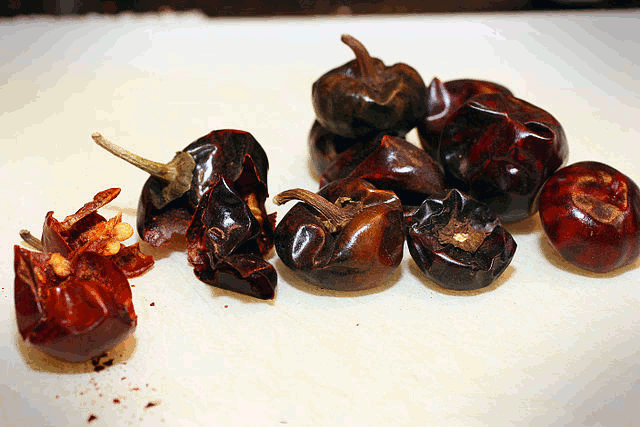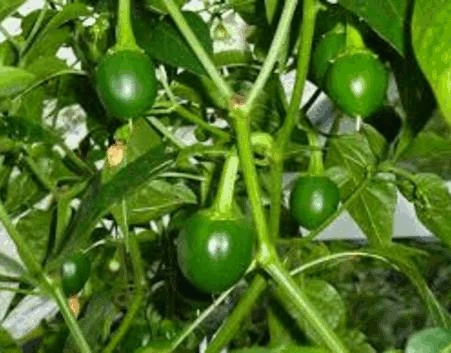Cascabel Chili
Scientific Name: Capsicum annuum
Climate: Warm and temperate.
Plant Description: It is green when immature and red when ripe. The dry chili is almost spherical and reddish brown. It measures on average about three centimeters in diameter, and has a smooth and hard shell. It has a pleasant taste that is somewhat like walnut. When this chili is shaken, its seeds sound like a rattle (cascabel in Spanish) which is where its name comes from.
Cultivation: Cascabel chili grows well in direct sunlight. It can be grown in any type of soil with humidity. The ideal soil is one that has good drainage, with the presence of sand and organic matter.
It is sown in the warm months directly in the ground, 3-5 mm deep with 60-70 cm distance between plants. It takes eight to twelve days to germinate and maturation takes about three months. Plants do best if the seeds are covered with humus from earthworms. The seeds can be sown throughout the year in hot climates. In cold climates you should avoid planting during the colder months.
The chilis can be cut when green or left to dry.
 Uses: The chili is normally roasted and then used in sauce, soups, and stews. It is prepared in red hot sauces with tomato or combined with green tomato and is sometimes mixed with other types of chili to give more consistency. It is also ground with tomato and other spices for stews with pork, chicken or beef. It is high in vitamin C and A and is also a powerful antioxidant.
Uses: The chili is normally roasted and then used in sauce, soups, and stews. It is prepared in red hot sauces with tomato or combined with green tomato and is sometimes mixed with other types of chili to give more consistency. It is also ground with tomato and other spices for stews with pork, chicken or beef. It is high in vitamin C and A and is also a powerful antioxidant.
Pests and diseases:: The pests that can occur in the cultivation of chili are the bulging flea, borer, aphid, worms, whitefly and leaf miner. Another problem that arises is the wilting of the chili mainly when the fruit is growing and ripening
En español: Chile bolita

